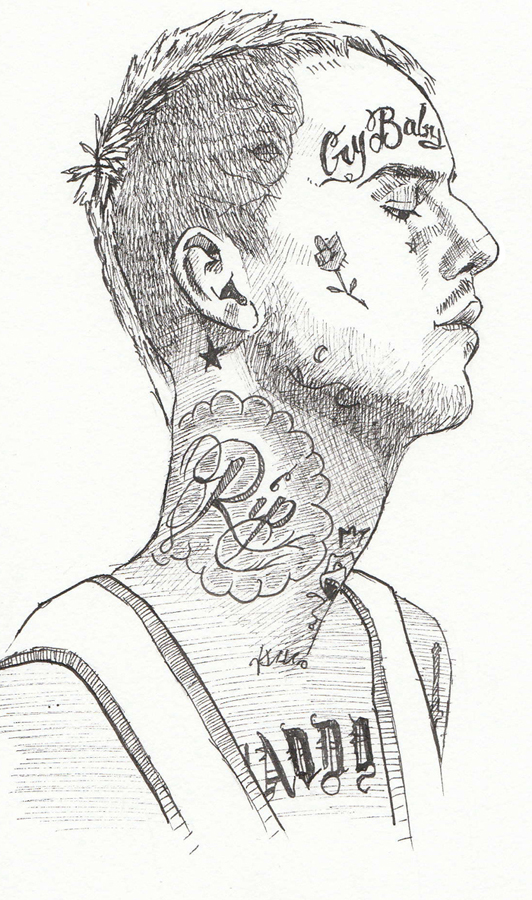On the night of Nov. 15, Gustav Åhr, known by his stage name Lil Peep, was found dead inside his tour bus outside of a venue in Tucson, Arizona. He was set to perform in the second to last stop on his Come Over When You’re Sober tour, a 68-day tour spanning Europe and North America. First responders reported he appeared to have been killed by a Xanax overdose, but online forums quickly ignited with the rumour that Peep had been sold drugs laced with fentanyl, a powerful–and often deadly–opioid. Anyone familiar with Peep’s music was aware of his struggles with drug dependency, but the too-early death of the 21-year-old rapper was nonetheless disturbing and shocking for his fans across the world.
In the few years since Peep rose to prominence, he cultivated a deeply loyal, passionate fan base, and left a lasting impression on rap music. Largely credited by critics and fans alike as the pioneer of emo-influenced rap, Lil Peep was able to achieve a seemingly contradictory blend of modern trap machismo and early-90s alt-rock sappiness in hits like “Star Shopping” and “Crybaby.” Peep’s signature sound—angsty guitar strumming, rumbling 808 bass, trap-style drums, and remarkably catchy hooks—has been emulated by a long list of mainstream artists, including Drake, Post Malone, and Lil Uzi Vert. Peep’s influence was international; his following in Russia rivaled his American fanbase, and he even moved to London in June to deepen his connection with European fans.
Peep was on the come up, having gained the attention of a number of rap superstars, made appearances for labels at Paris Fashion Week, and hinted at plans to launch his own clothing line. Peep had only released his debut album, Come Over When You’re Sober, Pt. 1, in August, and its most popular song, “Awful Things,” neared 20 million views on YouTube in the days before his death.
Although his cultural innovations are not to be discounted, Peep will also be remembered as a warm and accessible presence in rap. In a genre typified by emotional detachment and toughness, Peep wrote songs about his emotional vulnerability and troubled relationships, while still hosting mosh pits at every show. His emotional subject matter balanced his braggadocio in such a way that, when he spit bars about expensive cars and drugs, it came across as playful rather than tasteless. His music was a home for many, and as alt-rock and emo faded into obscurity, Peep carved out a space where his fanbase—mostly composed of teens undergoing the sombre and occasionally depressing trials of adolescence—could feel welcome and understood.
Peep touched many with his music and presence. Vigils were held in many cities; artists including Post Malone, Diplo, and Pete Wentz offered their condolences following Peep’s death; and actress Bella Thorne, Peep’s ex-girlfriend, posted videos to her Instagram story mourning him. Although not noted as a champion of LGBT+ rights, Peep came out as bisexual amid a culture not known for its social tolerance, and his close relationship with fellow rapper iLoveMakonnen defied rap’s rigid social norms—much like Peep’s music.
Peep’s death has triggered an important culture-wide conversation about the glorification of drug abuse in rap music. Lil Uzi Vert, who is often credited alongside Peep with the creation of emo-trap, announced, in the wake of Peep’s death, that he has chosen to become sober.
Peep’s grapple with depression was heavily reflected in his lyrics. Although it is important to acknowledge the real and serious consequences that drug use can carry, the framing of this conversation around Peep’s death perpetuates victim blaming. Drug abuse in rap, Peep’s notwithstanding, is symptomatic of a larger struggle with mental health within the culture, and excluding it as a topic in these discussions following Peep’s death puts the culture at risk of losing more of its artists.








